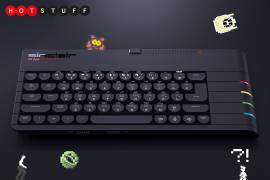ZX Spectrum Vega vs Recreated ZX Spectrum
Two 8-bit retro comeback wannabes enter! One 8-bit retro comeback wannabe leaves!
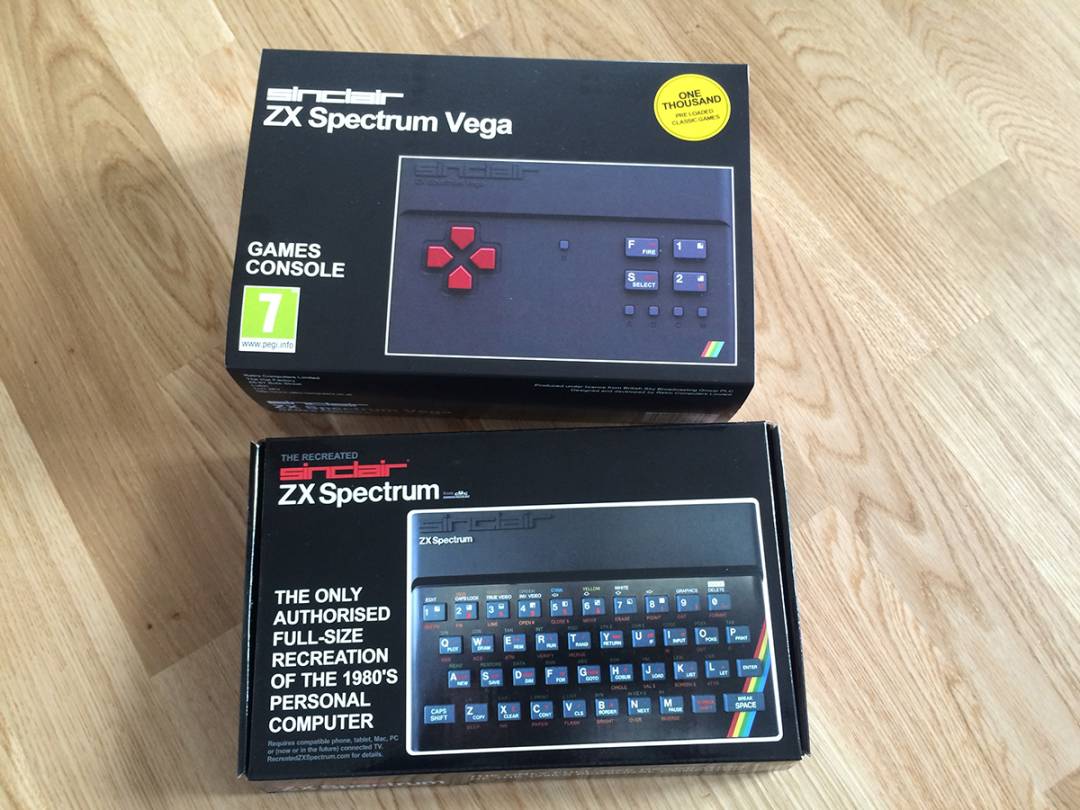
This is quite a surreal moment. We’re living in 2015 and yet two new ZX Spectrums(ish) are competing for our retro love, promising the kind of nostalgic joy only eye-searing colours, ear-smashing audio, and infuriatingly difficult old-school games can provide.
If you weren’t alive during the era of fluorescent day-glo socks, the original Transformers, and CRASH magazine, know this: the ZX Spectrum was revolutionary. The dinky little computer with its rubber keyboard kickstarted the UK videogames industry, and many of today’s leading lights got their start on the Speccy. Of course, if you were around back then, you’re likely wide-eyed at the thought of revisiting Chuckie Egg, Manic Miner, Monty on the Run, Skool Daze and Jet Set Willy, gagging to perform a quirkafleeg.
So in the red corner, we have the ZX Spectrum Vega, with input from Sir Clive Sinclair himself. In the blue corner, the Recreated ZX Spectrum, made (dead) flesh through the efforts of Elite Systems Ltd, one of the original Spectrum’s most famous software developers.
Let battle commence!
ZX Spectrum Vega (£100 + P&P)
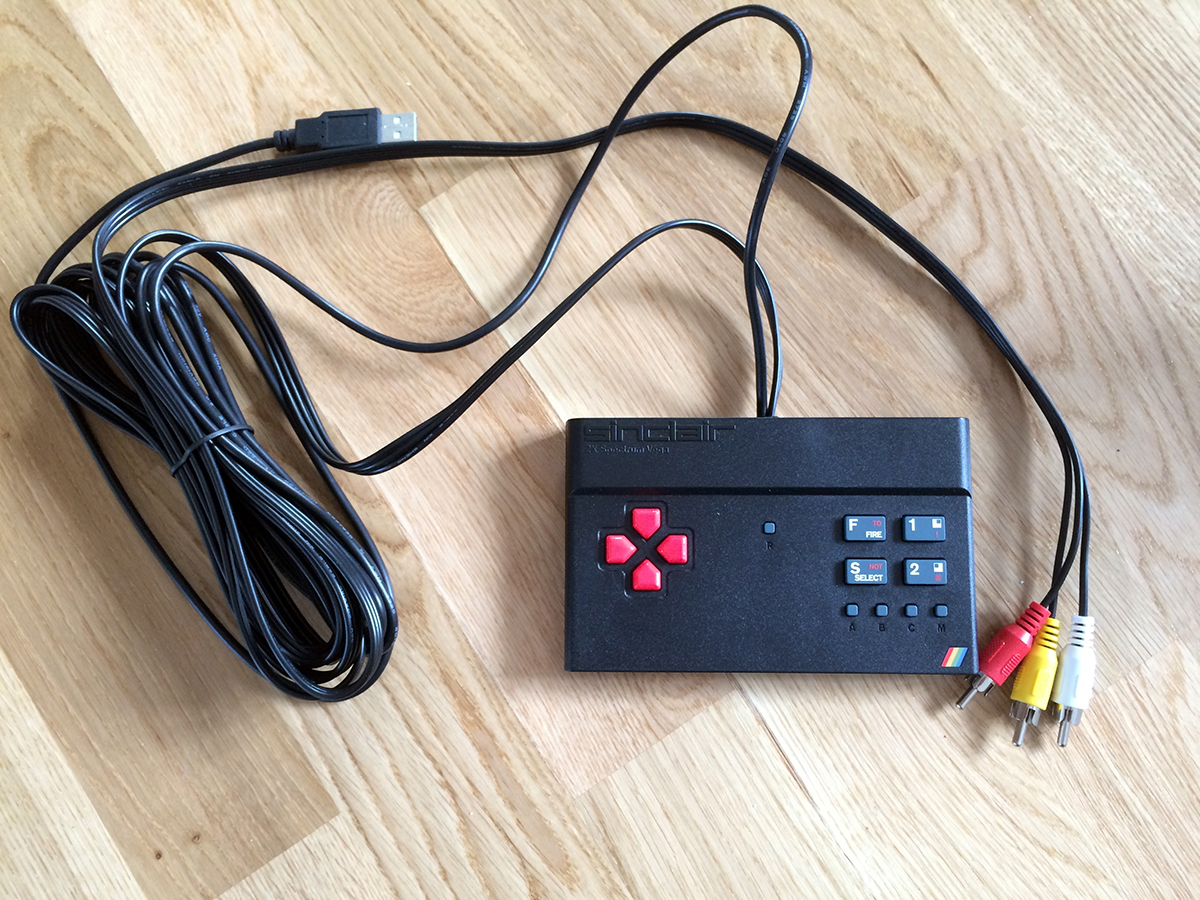
What’s the story?
The Vega is the brainchild of Luton-based Retro Computers Ltd, a start-up in which Sinclair Research Ltd is a shareholder. Although Sir Clive was reportedly not overly thrilled during the 1980s in the Speccy mostly being used for games, that’s all the Vega’s designed for. There are nods to the original hardware, but this is essentially a plug-and-play TV system.
The initial run was funded by an Indiegogo campaign. There was controversy in Spectrum developers being asked to ‘donate’ games to the cause in return for Retro Computers Ltd making a charitable donation to Great Ormand Street Hospital for Children, but the team nonetheless had little problem in raising over £150,000.
How does it work?
Long wires trail from the unit and cannot be detached. The composite and audio ones go into the relevant ports on your telly, and the USB one must find its way to a power supply — there’s not one in the box.
Once the Vega’s fired up, you select games using a smart on-screen menu. Controls have been mapped to the Vega’s buttons, although because Spectrum games were typically controlled using its keyboard rather than joysticks or gamepads, some mappings are awkward. For text adventures, there’s a virtual on-screen keyboard, which is cleverly designed (you drill down into ‘groups’ of characters), but ultimately tedious to use.
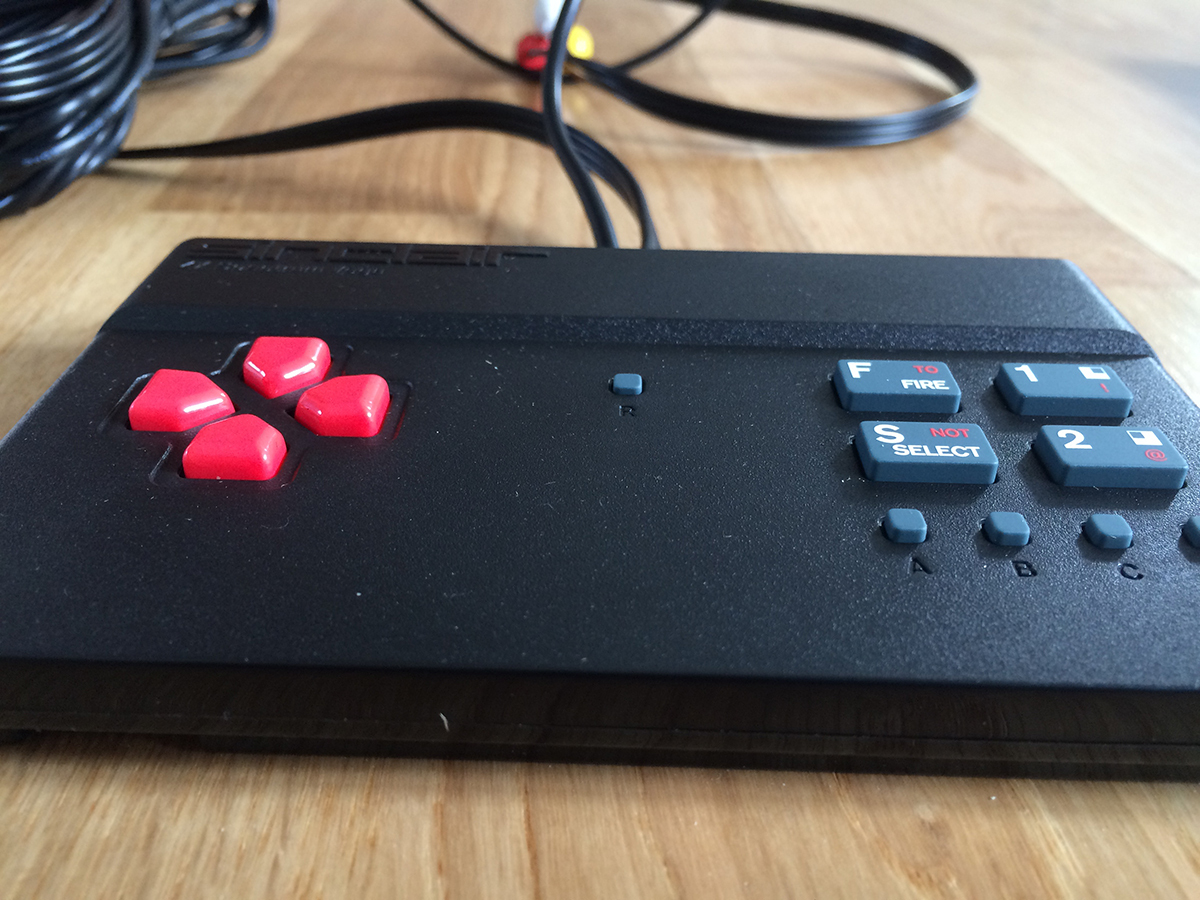
What games can you play?
1000 games are included, and you can trawl through the entire list on Funstock’s sales page. Suffice to say the quality is extremely variable. Still, a handful of titles stirred my 8-bit soul, such as Avenger, Bounder, Bugaboo the Flea, the Horace and Monty Mole games, Spindizzy, and Jack the Nipper. And if a game you loved isn’t there, you can naughtily download it from the web and get it into the Vega using a micro-SD card; although be warned the controls might be a pain to successfully map.
Is it any good?
The software side of things is. Performance and emulation are excellent, and the menu system is pleasingly easy to use. There’s even a neat retro slant, a chip-tune blaring away in the background as you navigate the menus. Everything else is far less impressive.
Composite-out means the image quality is iffy on modern tellies. The device feels cheap — it’s extremely light, and the controller part’s massively outweighed by the connected wires. Worse, it’s broadly unpleasant to use. Uncomfortable in the hand, the unit’s sharp edges dig into your palms during gaming sessions. The four directional arrows make finding diagonals nightmarish, and while the action buttons are fine, their layout is strange — at odds with modern controllers while not especially authentic to the original hardware.
So while you get plenty of games for your money, the hardware feels more like a 20-quid TV game from a market rather than what you’d expect for five times that price.
Specs
Composite/audio out • USB out (power) • micro-SD slot • 1000 games built-in
Stuff says ✭✭✩✩✩
We wanted to like the Vega, but nostalgic joy is rapidly replaced by reality — and more than a little pain
Recreated ZX Spectrum (£100)
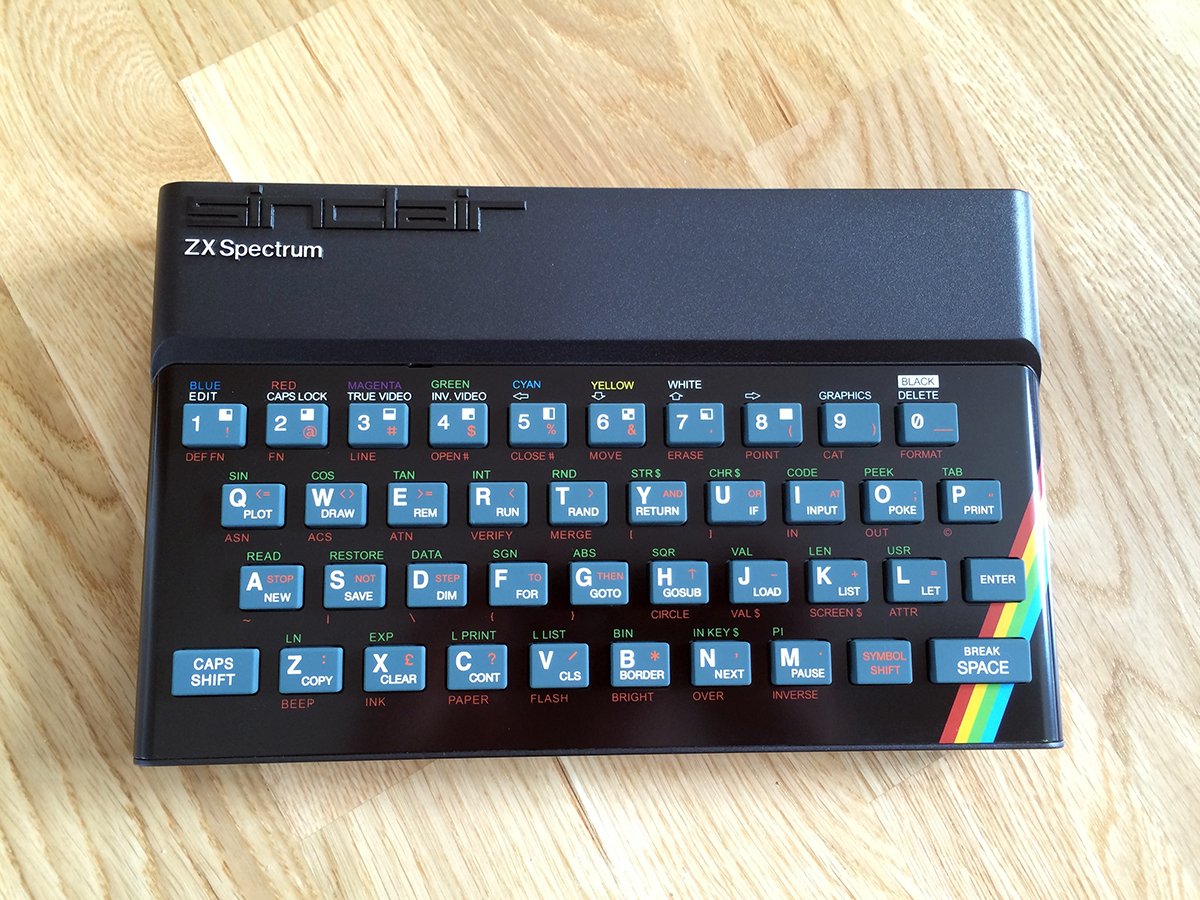
What’s the story?
As mad as turning the Spectrum into a TV game is, Elite decided to out-mad that idea by bringing back the Spectrum as… a Spectrum. Well, sort of. Elite settled on something that at a glance appears identical to the original hardware, but that’s in fact a custom Bluetooth keyboard, primarily designed to be used with Elite’s mobile app, but that works with any other compatible system.
It was crowdfunded, too, on Kickstarter, in a campaign nearly derailed when it turned out some developers with games in Elite’s apps of the day had not received royalty payments. Still, 821 backers ensured the Kickstarter squeaked home, reparations were made, and the keyboard is — sensibly — open for anyone to support.
How does it work?
The unit’s charged by two AA batteries, although there’s an optional micro-USB slot if you’ve a charger lying about. You then pair it with whatever system you want to use the keyboard with. This can be an iOS or Android device, whereupon your first port of call will be Elite’s Spectrum app. The device has two modes. One is specifically for Elite’s apps, and gets around iOS’s Bluetooth single-key input limitations that would otherwise leave games largely unplayable; the other is ‘QWERTY’, for apps expecting a standard keyboard.
Alternatively, pair the keyboard with a PC or Mac and use it with Elite’s online emulator (which at the time of writing lacked sound) or any other piece of software. A word of warning, however: using the Recreated ZX Spectrum as a standard keyboard for email and the like isn’t what you’d call an optimal experience, and it will also get you branded as the world’s biggest hipster.
Gaming good ‘uns › The top 10 games in the world right now
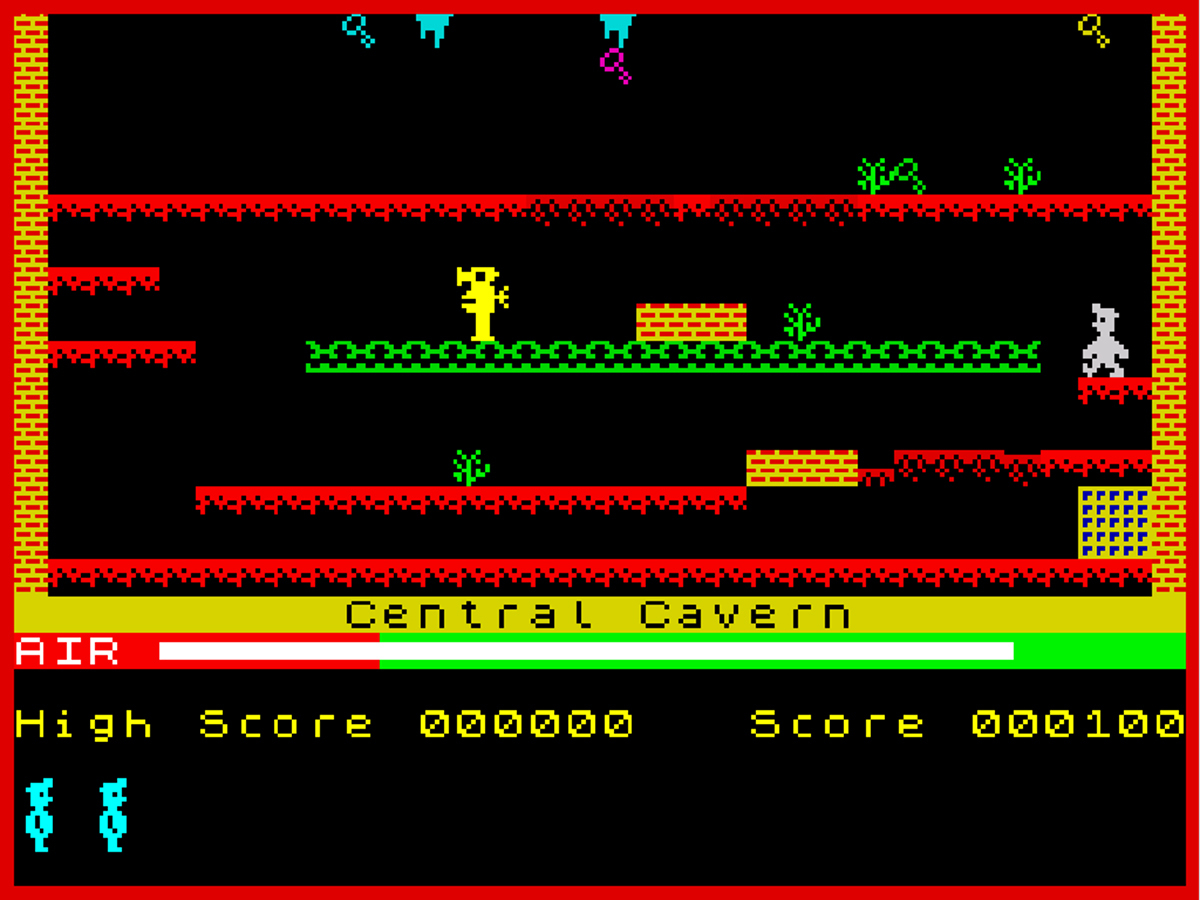
What games can you play?
The apps are fully licensed (this time round, Elite says all revenues go to the licensor). This means there’s a much smaller games selection than on the Vega, but, importantly, quite a few titles are ones you’ll want to play. Buggy Boy, Beyond the Ice Palace, Chuckie Egg and Saboteur! all hold up well, and are free. Some standout titles require a 79p payment, including Cybernoid, Jet Set Willy, Manic Miner, Nebulus, Ranarama, Stormlord and Uridium. Despite their age and mobile gaming’s tendency towards free, you’re quite the skinflint if you can’t eke 79p of value out of Manic Miner. On the web app, all the games are freely accessible, but there’s no audio; in either case, Elite says it will add many more titles over the coming months.
Additional games cannot be loaded into Elite’s apps, but you can play games inside alternate Spectrum emulators. We paired our Recreated ZX Spectrum with a Mac and had it working with zxsp in under a minute, and then spent happy times zooming through lurid forests and blowing up fleeing scumbags in 3D Deathchase.
Is it any good?
Surprisingly, it really is. In a sense, the Recreated ZX Spectrum is the mirror of the Vega. Here, the app isn’t as good (although emulation and performance are both fine) — the interface is busy and all descriptive text is insanely wordy. Catalogue limitations are evident on mobile, and there’s more faffage in getting things up and running, due to Bluetooth shenanigans.
But once the Recreated ZX Spectrum’s going, you get that proper hit of nostalgia, and it sticks around. It’s not identical to the original ZX Spectrum, but Elite’s unit feels and looks very much like it, and we found the keys nicely responsive. The keyboard’s quite light (more so than an actual Spectrum) but sturdy enough on a desk, and comfortable to hold. The only snags are accessibility (anyone who didn’t have a Spectrum will look at this device and wonder what to do — but then it’s probably not really for them), and the high price. The latter’s perhaps unavoidable for such a niche unit, but it does mean Elite’s keyboard takes a hit when it comes to the Stuff rating.
Specs
Bluetooth keyboard • Powered by two AA batteries or 5V micro USB • 48 games in the app at launch (20 free)
Stuff says ✭✭✭✩✩
Utterly bonkers and surprisingly successful. For thirty quid less, it’d get four stars, but if you’ve got the cash and are a Speccy fan, it’s worth the outlay
Winner: Recreated ZX Spectrum
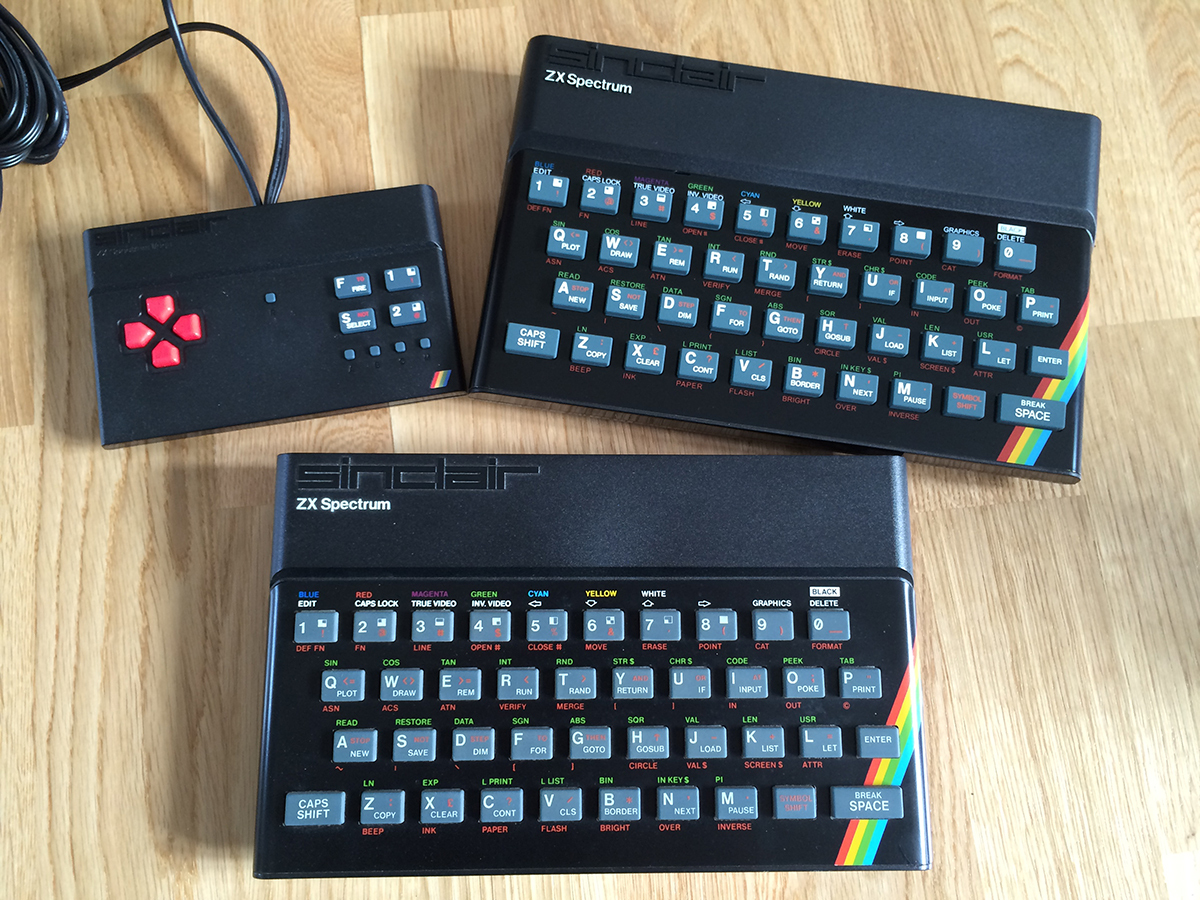
When it comes to retro-gaming, there are two main things to take into account: the experience and the games. Here, the Recreated ZX Spectrum nails the experience, with a surprisingly authentic take on the original 1980s hardware. Games-wise, it’s a bit limited on mobile, but dozens of additional titles are promised over the coming months.
The Vega comes across like a missed opportunity to widen the appeal of Spectrum gaming. If anything, it includes too many games and could have done with focussing a bit more on quality rather than quantity. But really the hardware lets it down. With a better controller and a lower price-point, we’d have been more sympathetic to the cause.
Beyond these units, there are alternatives. You could for 30 quid more grab an Android-based JXD S7800b and install a Speccy emulator such as Spectaculator; that device will also run emulators for many other old systems. Another option would be to scour eBay for a second-hand original Spectrum and grab a compatible smart-card reader for loading games. But neither option is doing things in a properly legal manner, nor supporting companies attempting to keep the flame alive with new hardware.
So as we don some ridiculous shoulder pads, spike up our hair, and prepare for another crack at Manic Miner’s Skylab Landing Bay, we’re crowning Elite’s Recreated ZX Spectrum as the winner of this particular retro-gaming battle. Sorry, Sir Clive.
King of the consoles › The top 10 games machines in the world right now


